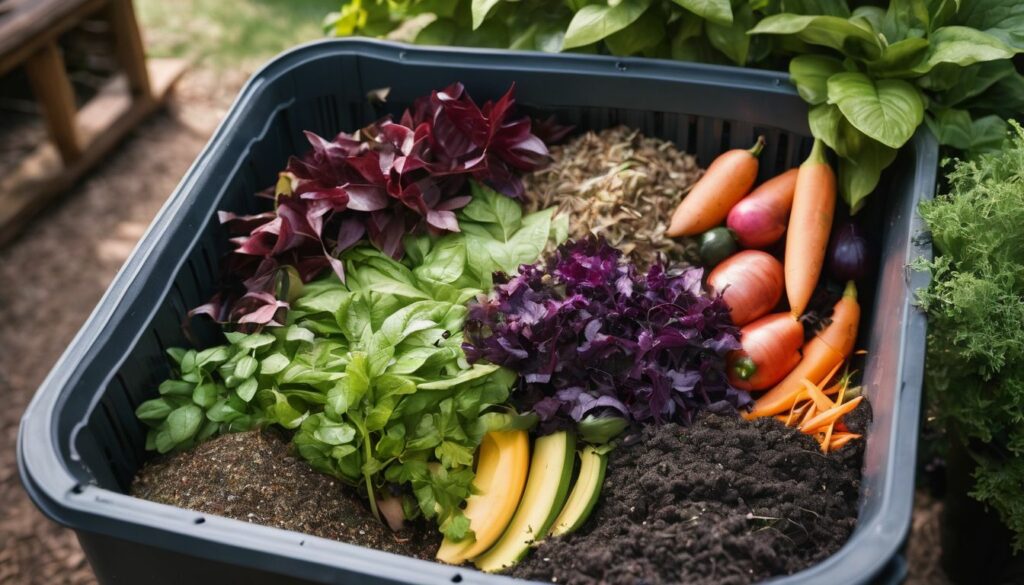Ever thought about the potential downsides of raised garden beds? You’re not alone. Many of us have been intrigued by their many benefits, but unaware of some unsung challenges that come with them.
In this blog post, we are going to unearth the less celebrated aspects – from initial construction costs to water evaporation problems. So stick around, because it’s time for some gardening candor!
Key Takeaways
- Raised garden beds can be expensive to construct, requiring materials like wood or stone and high-quality soil.
- These beds may have excessive drainage and increased water evaporation due to their elevated design, requiring frequent watering and nutrient replenishment.
- Raised garden beds are prone to rot, rust, termite infestation, and limited air circulation.
Understanding Raised Garden Beds
Raised garden beds are elevated planters that provide a contained space for gardening, offering numerous advantages for both experienced and novice gardeners.
Definition
Raised garden beds are like big planting boxes. They are above the ground and filled with soil. People use them for growing plants, flowers, or even veggies. You can build them from many things like wood or stone.
Some people also buy ready-made ones.
Benefits of Raised Garden Beds
Raised garden beds have several benefits that make them a popular choice for gardening. One of the advantages is that they provide better control over the soil quality. You can fill the raised beds with high-quality soil, which improves drainage and nutrient levels.
Raised beds also offer easier weed control since you can remove them more easily compared to traditional in-ground gardens. Additionally, raised garden beds are higher off the ground, making them more accessible for people with physical limitations or mobility issues.
They also warm up faster in the spring, allowing you to start planting earlier in the season. Overall, raised garden beds are a great option for those who want greater control over their gardening environment and accessibility.
Drawbacks of Raised Garden Beds
Raised garden beds come with several drawbacks, including expensive construction, the need for exceptional soil, excessive drainage, increased water evaporation, nitrogen depletion in the soil, susceptibility to rot and rust, termite attraction, limited air circulation, and unsuitability for certain plants.
Expensive construction
Raised garden beds can be costly to construct, which is a major drawback for many gardeners. The cost of materials such as lumber, metal, or stone can add up quickly, especially if you have large or multiple beds.
Additionally, filling the raised beds with soil can also be expensive, especially if you need to purchase bagged soil. All these costs can accumulate and make raised garden beds a more expensive option compared to traditional in-ground gardens.
Requires exceptional soil
One drawback of raised garden beds is that they require exceptional soil. This means that you need to invest in high-quality soil or amend your existing soil to create the optimal growing conditions for your plants.
The cost of purchasing good soil can add up, especially if you have multiple raised beds or a large garden area. Additionally, maintaining the quality of the soil over time may require additional fertilizers and amendments, which can also contribute to the overall expenses of using raised beds for gardening.
It’s important to consider these factors before deciding on raised garden beds as your preferred gardening method.
May offer too much drainage
One drawback of raised garden beds is that they may offer too much drainage. Because the soil in raised beds is elevated, water can flow out more easily compared to in-ground gardens.
This means that the soil may dry out faster, requiring more frequent watering and maintenance. It’s important to monitor the moisture levels closely and provide adequate irrigation to prevent plants from drying out.
This excessive drainage can also leach nutrients from the soil, affecting plant growth and health. So it’s essential to amend the soil with organic matter or compost to improve its water retention abilities and ensure proper nourishment for your plants.
Increases water evaporation
One drawback of raised garden beds is that they can increase water evaporation. Because the soil in these beds is often above ground level, it gets exposed to more sunlight and wind, causing moisture to evaporate faster.
This means that gardeners may need to water their plants more frequently and keep a close eye on soil moisture levels. The increased water evaporation can be a challenge for those who want to conserve water or live in arid climates where water resources are limited.
It’s important to consider this factor when deciding whether or not to use raised garden beds.
Can rob nitrogen from soil
One disadvantage of raised garden beds is that they can rob nitrogen from the soil. Nitrogen is an essential nutrient for plant growth, and when plants are grown in raised beds, it can be depleted more quickly.
This means that gardeners may need to add additional nitrogen-rich fertilizers to ensure that their plants receive adequate nutrition. However, this extra step adds complexity and cost to maintaining a raised bed garden.
So, it’s important for gardeners using raised beds to be aware of this potential drawback and take appropriate measures to replenish the soil’s nitrogen levels.
Prone to rot and rust
One of the drawbacks of using raised garden beds is that they are prone to rot and rust. Over time, the wood or metal materials used to build the beds can deteriorate due to exposure to moisture and other environmental factors.
This can compromise the structural integrity of the beds and lead to potential issues with stability. Additionally, rotting or rusting materials can also affect the overall appearance of the garden bed.
It’s important for gardeners using raised beds to regularly inspect and maintain them to prevent any potential problems caused by rot or rust.
Attracts termites
One drawback of raised garden beds is that they can attract termites. Termites are wood-destroying insects that can cause damage to the wooden frames or structures of raised beds. This can lead to the need for costly repairs or replacements.
It’s important to regularly inspect and treat your raised garden beds for termites to prevent infestations and protect your investment.
Lack of air circulation
One drawback of raised garden beds is the lack of air circulation. The close proximity of the soil and plants to the sides and bottom of the bed can restrict airflow, leading to poor ventilation and potentially creating a humid environment.
This can increase the risk of fungal diseases in plants and hinder their overall growth and health. Proper air circulation is essential for preventing dampness, mold, and rot in the garden bed.
Not suitable for all plants
Some plants have deep root systems that require more space to grow, and raised garden beds may not provide enough room for them. The limited size and depth of these beds can restrict the types and varieties of plants that can be grown, which limits the diversity of your garden.
It’s important to consider the specific needs of your plants before opting for raised garden beds as they may not be suitable for all plant varieties.
Tips for Successful Raised Garden Beds
To ensure successful raised garden beds, it is important to consider the cost and maintenance involved, choose appropriate materials, monitor water and nutrient levels, and practice crop rotation.
Consider cost and maintenance
One important factor to consider when deciding on raised garden beds is the cost involved in constructing and maintaining them. Building raised beds can be more expensive compared to traditional in-ground gardens, as it requires additional materials such as lumber or bricks for the walls or edges.
Moreover, filling these beds with soil can also add up to the overall cost, especially for larger or multiple beds. Additionally, maintenance costs should be taken into account, such as watering more frequently due to increased drainage and monitoring nutrient levels in the soil.
It’s essential to carefully evaluate your budget and resources before committing to raised garden beds.
Furthermore, choosing appropriate materials for construction is crucial in reducing long-term maintenance expenses. Opting for durable and rot-resistant materials like cedar or composite wood can increase the lifespan of your raised beds and minimize repair or replacement costs over time.
Choose appropriate materials
When building raised garden beds, it’s important to choose the right materials. Opt for untreated wood or composite lumber that is safe for growing plants and won’t leach harmful chemicals into the soil.
Avoid using pressure-treated wood, as it contains toxic substances. If you prefer a more durable option, consider using stone or brick for your bed walls. Additionally, select a sturdy weed barrier or landscaping fabric to prevent weeds from infiltrating your garden beds.
By choosing appropriate materials, you can ensure the longevity and safety of your raised garden beds while minimizing any potential drawbacks associated with inferior materials.
Monitor water and nutrients
I need to keep a close eye on the water and nutrients in my raised garden beds. Since raised beds can dry out faster than in-ground gardens, I have to make sure they are properly hydrated.
This means watering more frequently and monitoring the soil moisture levels regularly. Additionally, I need to pay attention to nutrient levels because raised bed gardens may require more fertilizers compared to traditional gardens due to the limited soil volume.
By constantly checking and adjusting the water and nutrient levels, I can help ensure that my plants stay healthy and thrive.
Practice crop rotation
Crop rotation is an important practice in gardening, but it can be more challenging with raised garden beds. Since these beds have a fixed location and limited space, it may be difficult to rotate crops effectively.
This can lead to increased disease pressure as the same plants are grown in the same area year after year. Crop rotation helps break disease cycles and maintain soil health, but with raised garden beds, this beneficial practice becomes harder to implement.
Conclusion
In conclusion, while raised garden beds offer many benefits, it’s important to consider the potential drawbacks. These include increased construction costs, the need for exceptional soil quality, and the risk of issues such as drainage problems and rotting.
Additionally, raised beds may not be suitable for all plants and can require more maintenance. By understanding these disadvantages and taking steps to address them, gardeners can make informed decisions about whether raised garden beds are the right choice for their gardening needs.
FAQs
1. What are the main disadvantages of raised garden beds?
The main drawbacks of raised garden beds include drainage problems, short lifespan, cost of building and soil manipulation needs.
2. Can gophers and voles cause issues with raised garden beds?
Yes, gophers and voles can be a problem for raised bed gardening as they may damage the plants’ roots.
3. Is it costly to build a raised garden bed?
Building a nursery or inground raised garden bed can be expensive due to wall or edge construction costs, especially when using quality materials.
4. Do I need special tools for tiller management in a used garden bed?
In some cases, you might need specialized equipment for tiller management in used or old garden beds with covers.
5. Are there any negative aspects related to lifespan if I choose raised beds?
Raised beds typically have a shorter lifespan compared to traditional inground ones which is one of their downsides.
6. What challenges could I face while managing soil in my restricted space?
One potential issue with restricting plant growth within edges is Soil manipulation which includes ensuring right texture and nutrients content; this could pose challenges over time making it limitations of Raised Garden Beds.





